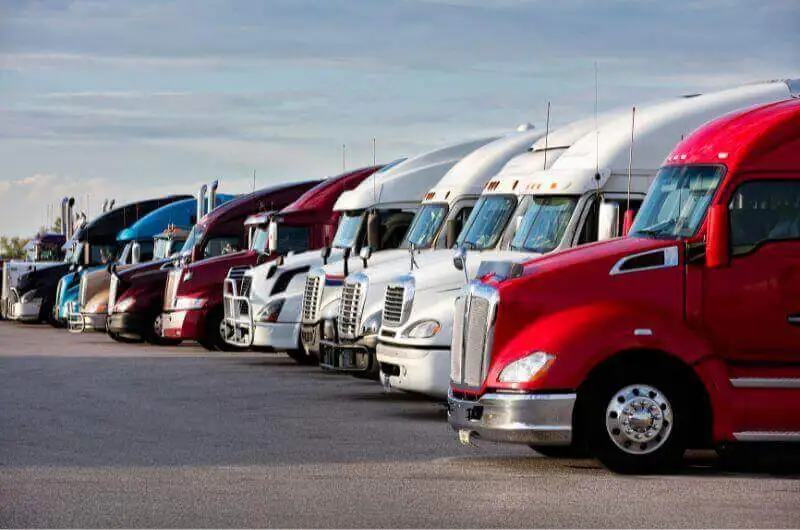What are the 10 types of trailers in transport and what are they used for?
Trailers come in various shapes, sizes, and purposes. It can be difficult to discern what the particular trailers and trucks are used for. Which type is the best for your company’s purpose? We’ve put together a list of the most common types of trailers with their descriptions and use.

Source: www.canva.com
1. Dry Van Trailers
Dry Van Trailers are enclosed trailers used when you need to protect the transported goods from the weather conditions on the road. They are common as you can use them to transport almost every type of cargo, and they are one of the cheaper options when it comes to trailers.
Dry van trailers add another security level to the transport, as they protect the cargo from weather and other security threats. Transport companies use it for daily items shipping of large corporations such as clothing or non-perishable goods.
2. Standard Flatbed Trailers
Another popular type of trailer is the flatbed trailer. Its huge difference and benefit at the same time are that it can be unloaded from all sides. This trailer is most convenient for transporting large and heavy cargo in a trailer. Flatbed trailers are opened from all sides, there is no outside container that covers the cargo. Often, it is protected by a tarp that is securely fastened.
3. Refrigerated Trailers (or Reefers)
If the transported cargo is perishable and needs to be carried at a certain temperature, refrigerated trailers are the ones for the job. Its ability to control the temperature in the trailer is perfect for trucks that mostly transport food, frozen products, or pharmaceuticals.
Tip: What are the pros and cons of road transport?
4. Drop Deck/Step Deck Trailers
Drop Deck trailers are an alternative to flatbed trailers. As it sits closer to the ground than a flatbed, it differs with maximum legal height. Drop deck trailers are an open type with two deck levels and have ramps on the sides for safer unloading.
5. Double Drop/Lowboy Trailers
A Lowboy trailer (or Double Drop trailer) is a semi-trailer with an open deck. The trailer sits very close to the ground and can transport heavier loads than other trucks. Therefore, it’s used for transporting heavy machinery or construction equipment.
6. Extendable Flatbed Trailers
As the name of the trailer probably hinted to you, an extendable flatbed trailer is a flatbed trailer that can be extended to carry longer cargo as their length can be modified. When you need to extend the bed, you can easily do so by releasing the pin connecting the two sections and stretching it to the required length.
That’s the only difference it has from a flatbed. Otherwise, it shares all the other characteristics. It’s an open type of trailer with no container covering the cargo.
Tip: Do you know what the biggest players in the transportation industry are today?
7. Removable Gooseneck Trailer (RGN)
A Removable Gooseneck Trailer (RGN) can carry the loads that other trucks are not able to, thanks to two characteristics. With RGN, the load is carried closer to the ground in the lower region of the bed in the middle. It can transport taller and heavier loads.
The gooseneck of the trailer (the front-end part) is removable. This allows the heavy cargo to be unloaded faster and easier.
8. Side-kit Trailers
Side-kit trailers are used for transporting material that is not or cannot be packed. That includes granular materials like powders, crops, and gravel. Items such as these have an irregular shape, so they can’t be carried in open-type trailers. Side-kit trailers have removable sides and are covered with a tarp to protect the material from weather or dirt.
9. Conestoga Trailer
This type of trailer offers a combination of benefits of the most used trailers—dry van trailers and a flatbed. With its special rolling tarp system, it protects the cargo in the trailer and when the tarp is rolled, it can be unloaded from all sides.
10. Multi-Car Trailer
Multi-car trailer is designed to transport cars safely without getting loose on the way. There are two types of multi-car trailers known as single-decker and double-decker. Which one to choose depends purely on how many cars you need to transport.




